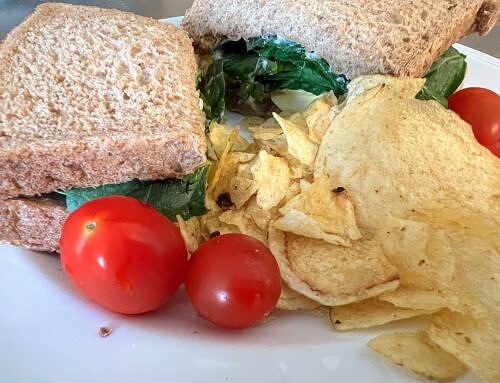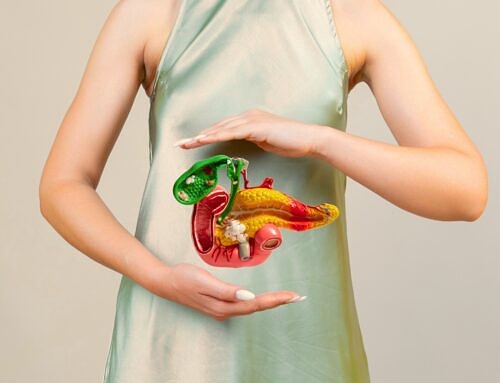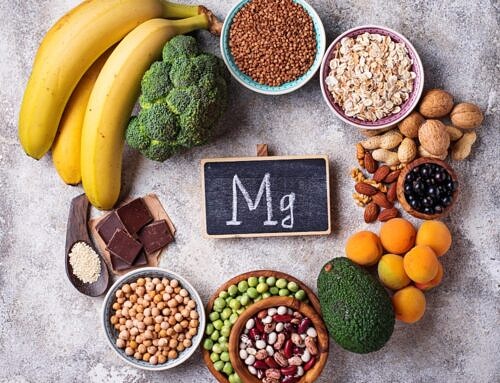
1) Read the ingredients
This is perhaps one of the most important things we can do to support our health when buying packaged food. Do those ingredients look appealing? Do you know what everything is, or where it comes from? The ingredients list will tell you far more about a product than the front of packaging information:
- Ingredients that you would not include in home-cooking tell you that the food is most likely highly-processed; and most likely to be of limited nutritional value.
- Ingredients are listed in quantity order – the items contained in the HIGHEST quantity are listed FIRST. Where does sugar come on the list?
- Sugar may be listed many times. It may be listed on it’s own, or as a sub-ingredient of a processed item (for example within the chocolate chips within a cookie recipe). Sugar comes in many different guises, including sugar, glucose, fructose, honey, syrup, lactose, maltose, sucrose, dextrose, fruit juice (yes, out of the fruit, juice is basically another sugar product), molasses, starch……
Remember: fortifying a product with vitamins and minerals does not necessarily make it good for you.
2) Check the Nutritional Information (not the “Traffic Lights”)
Checking the per 100g information is the only way to really understand what is in the product nutritionally – too many of the traffic light systems on the front of packets are based on unrealistic portions that are not necessarily comparable to other products. Even the per portion detail can be deceiving when you consider the item (for example, 200ml cartons of orange juice have per serving information of 150ml – so what do you do with the other quarter of the drink?!)
In terms of the definitions of “high” and “low” in sugar, which may be used on packaging:
- A product considered high in sugar contains 22.5g per 100g.
- A product considered low in sugar contains 5g or less per 100g.
For this information you need to look at the “sugars” detail, not the total carbohydrate number.
The recommended maximum added sugar/free sugar intakes per day in the UK are:
- Under 4 years, there is no total recommended but children under 1 year should not be given any foods containing added sugar (under any name)
- 4-6 years: no more than 19g added/free sugar per day
- 7-10 years: no more than 24g added/free sugar per day
- Age 11 years into adulthood: no more than 30g added/free sugar per day.
3) Rethink pudding
Is cake normal for pudding in your house? What about a chocolately yoghurt? These foods are high in sugar and of little health benefit. To reduce them try these ideas:
- Consider if the size of the more healthful part of the meal can be increased to reduce the desire for a dessert (if eating out may be a fruit starter would be an option).
- Ensure children eat their main before going for pudding – if they are full, they are full. We really do only have one stomach, and leaving the main to eat dessert is simply a waste of food.
- Offer fruit or plain yoghurt for dessert (or a combination of them!). If your child really won’t go with plain yoghurt, or you can’t find one in a suitable portion size for the lunch box, check the sugar content of different yoghurts and choose a suitable lower-sugar option. This article from Action on Sugar provides some concerning information about the sugar content of yoghurts: http://www.actiononsugar.org/surveys/2021/childrens-yogurts/display-name-913150-en.html.
- Consider stewed fruit instead of fruit pie.
- Beware of “low fat” options – they may have more sugar to balance the taste.
- Opt for good quality dark chocolate – the 70%+ chocolate. A much smaller portion of this is eaten than with milk or white chocolate, as it has a strong flavour. Even some children enjoy dark chocolate. I was surprised when my son first said he liked the strong stuff – I was disappointed too because that meant I had no excuse not to share my favourite chocolate!
- Make a sorbet by blending frozen fruit instead of serving sugary ice-cream, or make ice lollies from yoghurt and fruit.
- Find a recipe you like for healthful versions of treat foods – for example chocolate mousse made from avocado, banana and cocoa. Make sure your family knows what is in the food, don’t try to hide that it is a healthful version so that they can learn the healthier eating habits.
- Make sure portions are appropriate for the individual’s size and age – if you would eat the whole of an item as a portion, it may not be appropriate for a child to eat the same portion.
Cake for pudding is something that I have taken up with the local council who are responsible for the school meals menu. Their excuse is that their recipes are low in sugar and meet the government guidelines. Yes they do meet the guidelines, and are far better than a child going hungry, BUT offering a “low sugar” version does not make it OK. The children don’t know they are having low sugar foods, they see cake and think cake for pudding is normal and OK every day. Councils are failing to recognise that they are helping children to develop poor dietary behaviours which are likely to stay with the children throughout their lives. Perhaps this is because of the meal planners’ own learnt behaviours.
4) Avoid packaged fruit-based sweets, and limit fruit juice
“But they are fruit!”, I hear you cry. Yes they are, but once the fruit has been processed to make these sweets there is little of the actual fruit left. They are pretty much just the juice – the water and sugar bit. Eating a whole fruit provides nutrients in the flesh (and peel) that are lost in the processing. This is where the term “free sugar” comes in. The sugar has essentially been freed from the fruit.
It would be much better to select or offer a piece of fruit. If drinking fruit juice, limit it to one small glass per day (adults are recommended to have no more than 150ml of juice or smoothie per day, unfortunately lunch box suitable drink cartons often contain 200ml……..). This sounds silly, after all it is fruit and it is natural. However, think about how much juice you get if you squeeze an orange – how many oranges are needed to make that one glass? Would you eat that many oranges in a sitting? (According to one website, the average orange contains 70ml of juice – so that is just over 2 oranges per portion of juice).
5) Consider the definition of “treat”
Chocolate, sweets and ice-cream are considered “treats”, but what does that mean? To me, a treat is something special; something that is not the norm. However, the word “treat” seems to have become a by-word for these foods as they have become an everyday food. An everyday food that is damaging our health – are we really treating our children (or ourselves) if we routinely give them damaging foods?
I know part of the problem is a need to change our own behaviour – without wanting to sound really old – when I was growing up people had much less knowledge about the damaging effects of sugar. This was essentially down to the sugar industry successfully burying negative studies and reports to make fat the bad guy. The knowledge was there, but it didn’t get shared with the general public. So, at that time sugar was thought to be acceptable as a normal, everyday food. But now that we know better we need to change this thought process. Yes, it’s hard (even for me) but if we start with small steps we can get there.
If we routinely eat cakes for pudding, routinely give sweets after school or routinely have sugary cereal for breakfast, they are routine. They become expected and are a habit, they are not a treat.
We should also consider why we are giving the treat. Is it a reward? Providing treat food as a reward can set up unhealthy relationships with food as those foods become associated with positive feelings. We need to be careful to avoid this mindset being learned.
“Treats” should not be our normal diet – it’s time to make “healthy” normal for the sake of our health, and the long-term health of our family.



